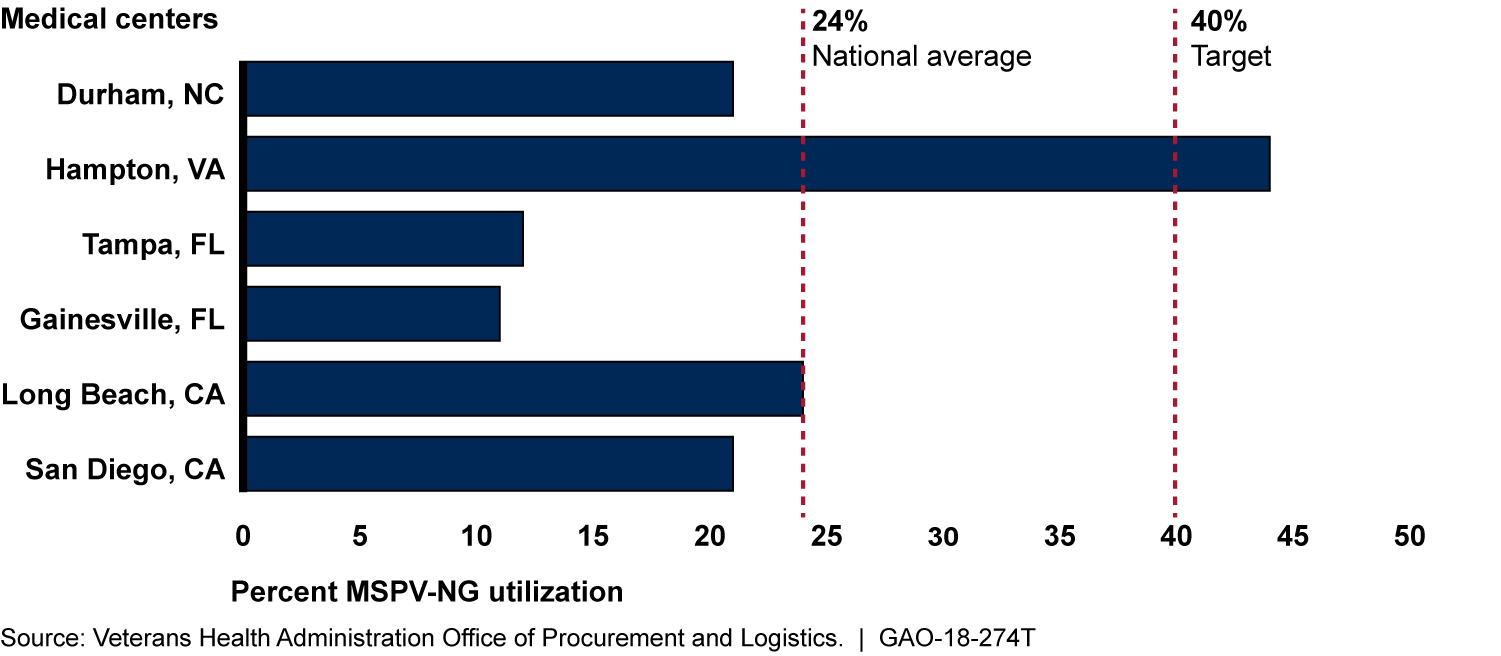Veterans Affairs Contracting: Improvements in Buying Medical and Surgical Supplies Could Yield Cost Savings and Efficiency
Fast Facts
The VA launched a new program last year, MSPV-NG, to streamline the way its medical centers buy supplies for treating 7 million vets.
As with any organizational transformation, the program's success depended on having a strong strategic plan, stable leadership, good communication, and stakeholder buy-in. But as we testified here, the VA was missing these elements when it launched the program; as a result, the program has yet to achieve key cost savings and efficiency goals.
In the report on which this testimony is based, we made 10 recommendations on how the VA can better manage future phases of the program and improve its purchasing.

Exterior photograph of a Department of Veterans Affairs medical center.
Highlights
What GAO Found
The Department of Veterans Affairs (VA) established the Medical Surgical Prime Vendor-Next Generation (MSPV-NG) program to provide an efficient, cost-effective way for its facilities to order supplies, but its initial implementation did not have an overarching strategy, stable leadership, and workforce capacity that could have facilitated medical center buy-in for the change. VA also developed requirements for a broad range of MSPV-NG items with limited clinical input. Further, starting in June 2015, VA planned to award competitive contracts, but instead, 79 percent of the items available for purchase under MSPV-NG were added through non-competitive agreements. (See figure).
VA's Use of Non-Competitive Agreements Spiked Late in 2016

As a result, the program did not meet the needs of medical centers, and usage remained below VA's 40 percent target. (See figure.)
Utilization of Medical Surgical Prime Vendor-Next Generation (MSPV-NG) Program at Six Selected Medical Centers (May 2017)

VA has taken steps to address some deficiencies and is developing a new approach to the program. However, VA will likely continue to face challenges in meeting its goals until it fully addresses these existing shortcomings.
Why GAO Did This Study
VA spends hundreds of millions of dollars annually on medical supplies to meet the health care needs of about 7 million veterans. To provide a more efficient, cost-effective way for its medical centers to order supplies, the VA established the MSPV-NG program.
The program's goals include involving clinicians in requirements development, leveraging buying power when making competitive awards, and consolidating supplies used across medical centers. VA began developing requirements in early 2015 and launched the program in December 2016.
This testimony summarizes key information contained in GAO's November 2017 report, GAO-18-34. Specifically, it addresses the extent to which VA's implementation of MSPV-NG has been effective in meeting program goals. GAO analyzed VA's requirements development and contracting processes, and identified key supply chain practices cited by four leading hospital networks. GAO also met with contracting and clinical officials at six medical centers, selected based on high dollar contract obligations in fiscal years 2014-2016 and geographic representation.
Recommendations
GAO made 10 recommendations in its November 2017 report, including that VA develop an overarching strategy, expand clinician input in requirements development, and establish a plan for awarding future competitive contracts. VA agreed with GAO's recommendations.
